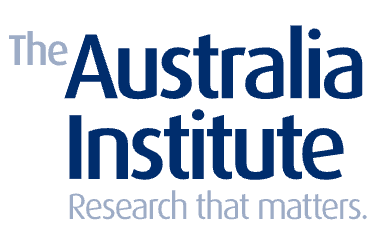Reported by: Anya Jarosz and Christopher Noonan
Publish date: 9th Sep 2024

Problem Identification:
The Australian Government currently has no official definition of the poverty line.
According to The Australia Institute, ‘The Australian Government has no official definition of poverty and does not officially track or publish updates on the prevalence of poverty’.
This means that there is no clear, consistent benchmark for measuring poverty across the country. This could lead to inconsistencies in how poverty is understood by different agencies and stakeholders and may make it harder to ascertain the extent of poverty, track changes over time, or target policies and resources effectively.
Context:
Solution Identification:
Advice:
Download the 1-page policy brief PDF here:
Public Support:
The Australia Institute https://apo.org.au/sites/default/files/resource-files/2024-06/apo-nid327363.pdf

Where to go to learn more:
The Australia Institute, Ending Child Poverty in Australia: https://apo.org.au/sites/default/files/resource-files/2024-06/apo-nid327363.pdf
2. Australian Council of Social Services: https://povertyandinequality.acoss.org.au/faq/#poverty-definitions
Lived Experience:
Dr. Emily Carter, a dedicated researcher specialising in socio-economic disparities, faces a struggle as the government’s failure to define a poverty line directly impacts her work. Despite her extensive research revealing alarming rates of deprivation, her data may not be in the best position to drive policy changes because the government does not officially endorse any specific definition of poverty. This bureaucratic void not only hampers her ability to advocate effectively but also casts a shadow over her credibility and funding prospects. The disarray in defining poverty has left Dr. Carter in a frustrating limbo, where her efforts to illuminate and address critical issues are stymied by the very system she seeks to reform. She can only imagine how challenging it must be for government officials who hope to reduce poverty but have no agreed-upon way to understand and measure it.
Reference list (name, date):
Australian Council Of Social Services. (n.d.). ACOSS – Australian Council of Social Service. https://www.acoss.org.au/
End Child Poverty. (2024, June 28). Majority of Australians Back Action to Track and Address Child Poverty [media release].
Barnott-Clement, D. (2024, June 27). Majority of Australians Back Action to Track and Address Child Poverty. The Australia Institute. https://australiainstitute.org.au/post/majority-of-australians-back-action-to-track-and-address-child-poverty/
Davidson, P; Bradbury, B; and Wong, M. (2022). Poverty in Australia 2022: A snapshot. Australian Council of Social Service (ACOSS) and UNSW Sydney. https://povertyandinequality.acoss.org.au/a-snapshot-of-poverty-in-australia-2022/
Hutchens, G. (2022, October 19). Why are millions of Australians still living in poverty? Experts say it’s solvable. ABC News. https://www.abc.net.au/news/2022-10-20/why-are-millions-of-australians-still-living-in-poverty/101553340
OECD (n.d.). Poverty rate. https://www.oecd.org/en/data/indicators/poverty-rate.html
University of Melbourne. (2024, August 2). Researchers and advocates set to track the true extent of poverty. https://arts.unimelb.edu.au/news/researchers-and-advocates-set-to-track-the-true-extent-of-poverty
Scicluna, K., Thrower, J. (2024). Ending child poverty in Australia. The Australia Institute. https://australiainstitute.org.au/wp-content/uploads/2024/06/P1523-Ending-child-poverty-in-Australia-Web-2.pdf
United Nations. (2015). United Nations Sustainable Development Goals. United Nations. https://www.un.org/sustainabledevelopment/
Conflict of interest / acknowledgment statement:
N/A

.png)
Comments